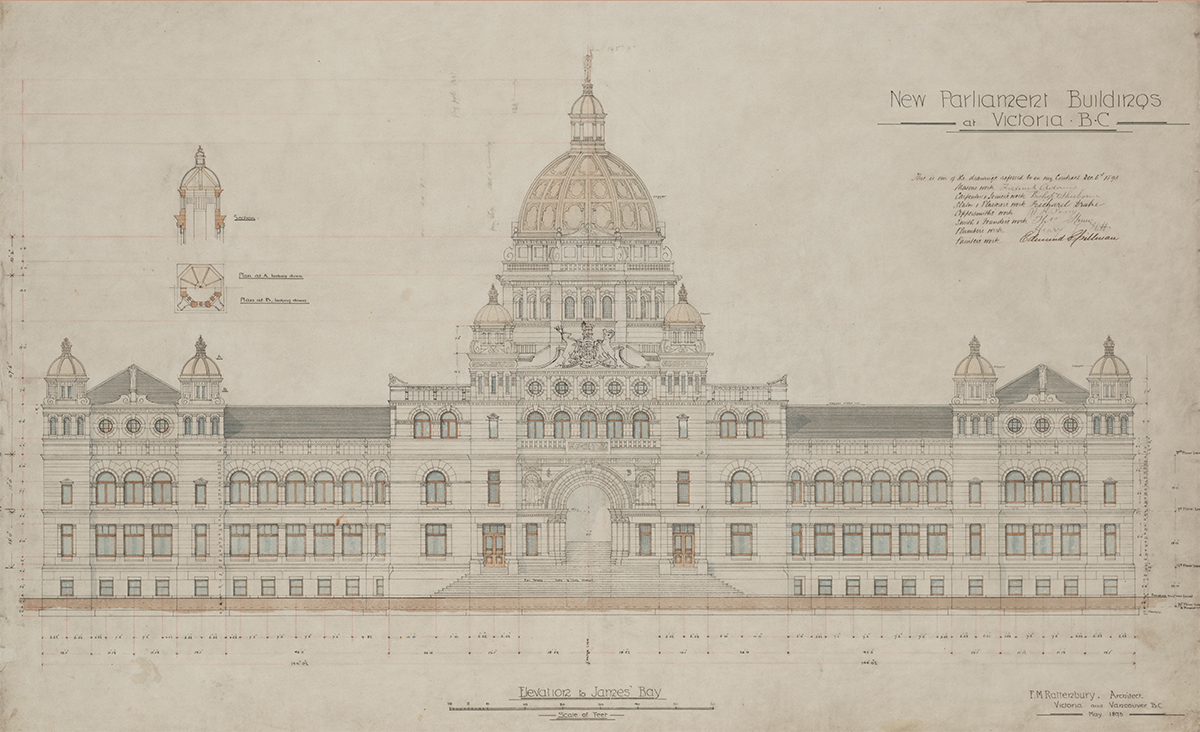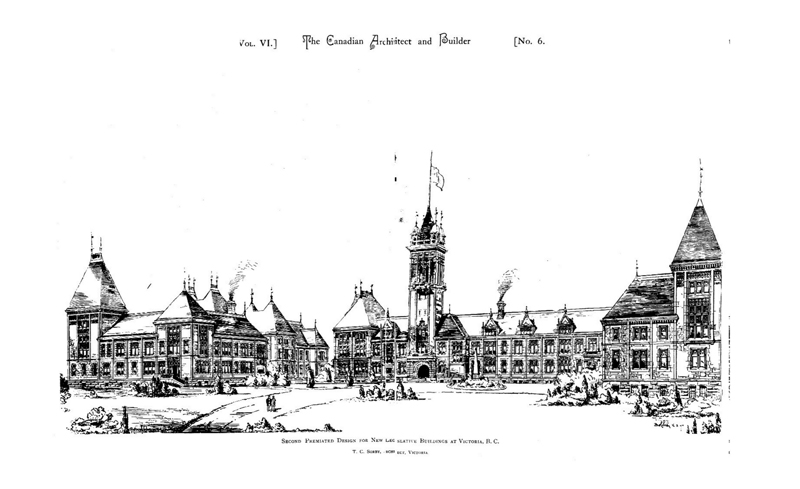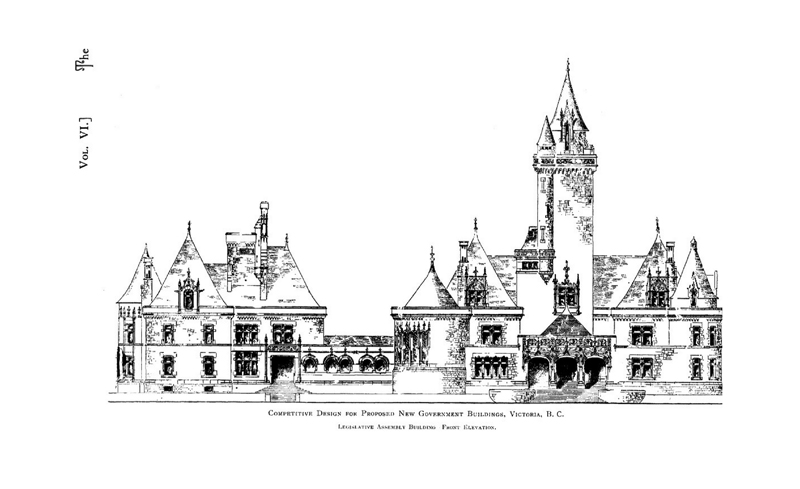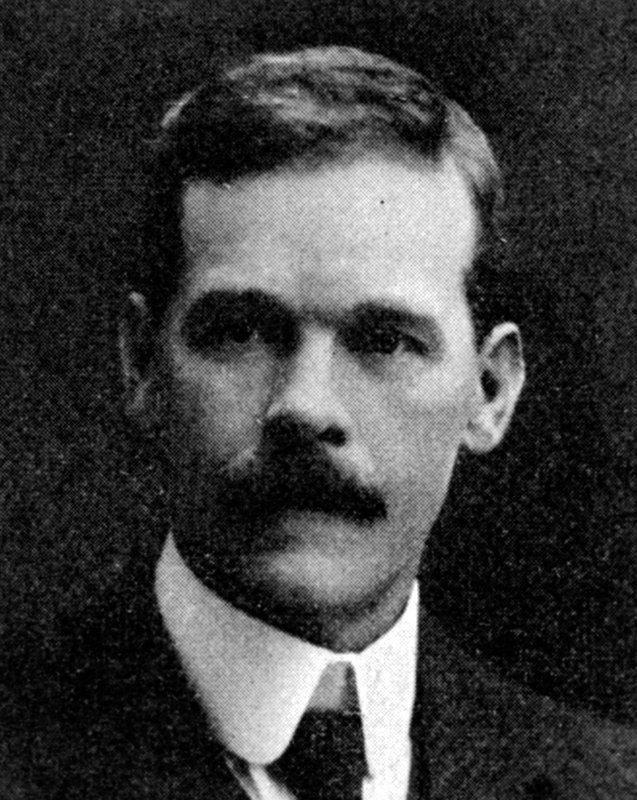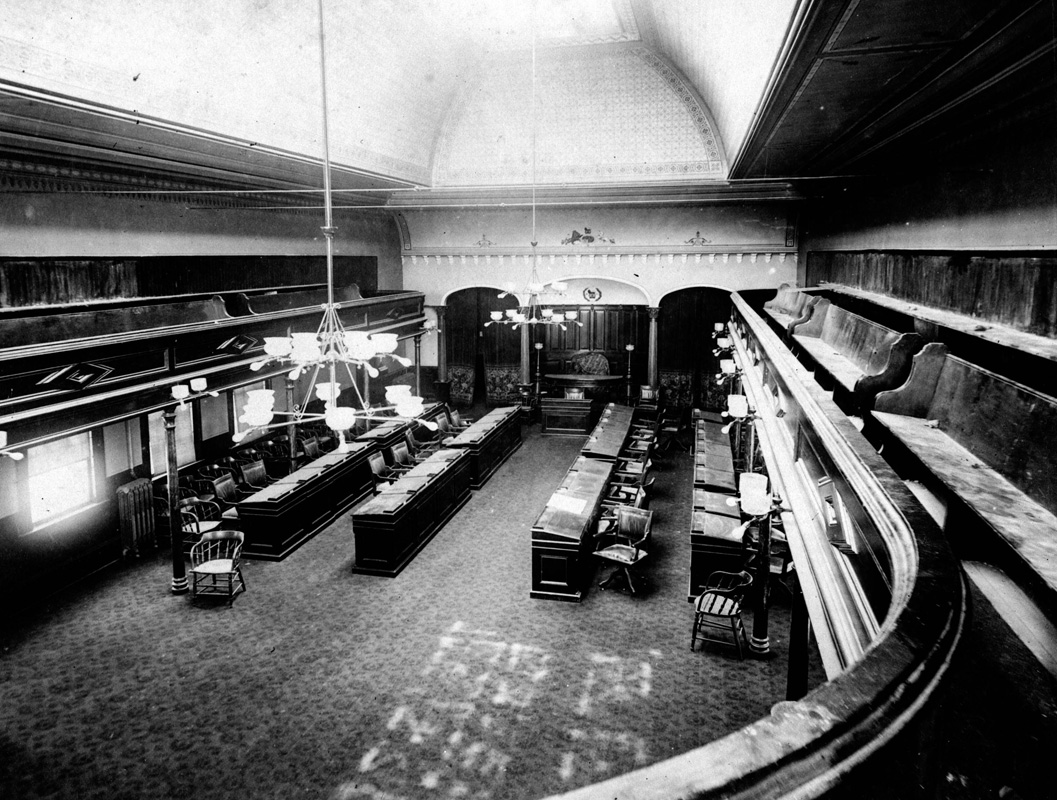After 30 years, it was generally recognized that the Birdcages were no longer adequate. Too small for the growing province, they were difficult to heat and their quaint design was increasingly out of favour. According to a local newspaper, the "mean and insignificant public buildings are outward and visible signs of a sordid, narrow-minded and uncultivated State or Province. Visitors are sure to judge the whole people by the buildings they erect for public uses. Those buildings ought to be handsome as well as commodious" (Victoria Colonist, March 16, 1883). The idea of a new, substantial building was also supported by those in Victoria who feared that the provincial capital might relocate to New Westminster.
The economic depression of the early 1890s was an added impetus for a major public works project. The jobs were badly needed. In 1892, a competition was held to select a design for the new Parliament Buildings and were to include an administrative building, a Legislative Assembly building, a government printing office, and a land registry office.
65 sets of drawings were submitted by architects from all over Canada and the United States. From a short list of five finalists, a government-appointed committee of two non-competing architects from Ontario selected Francis Mawson Rattenbury, who had recently arrived in Vancouver from Britain.
